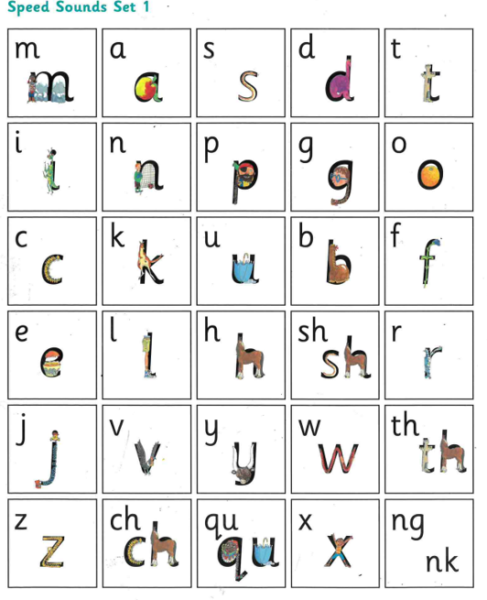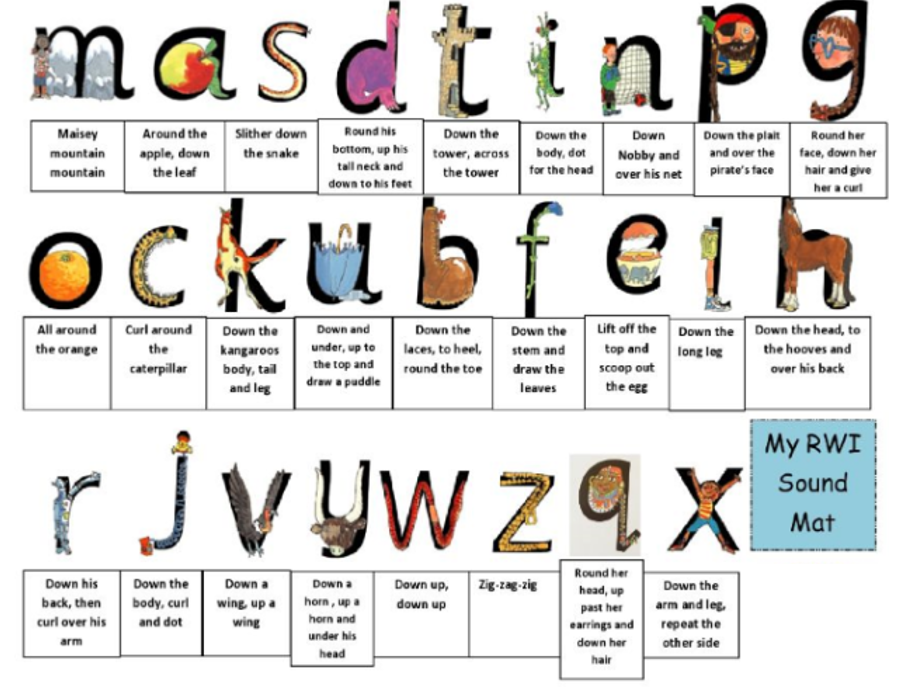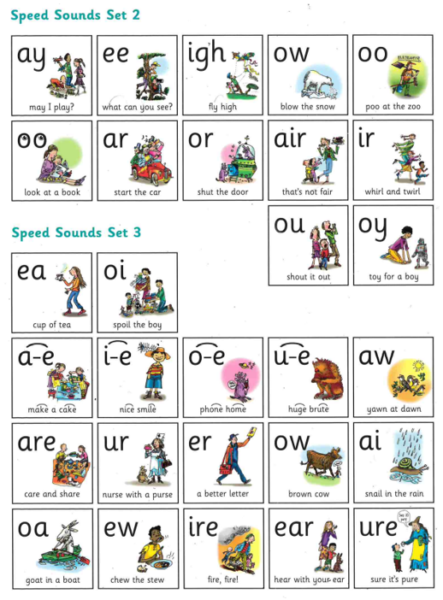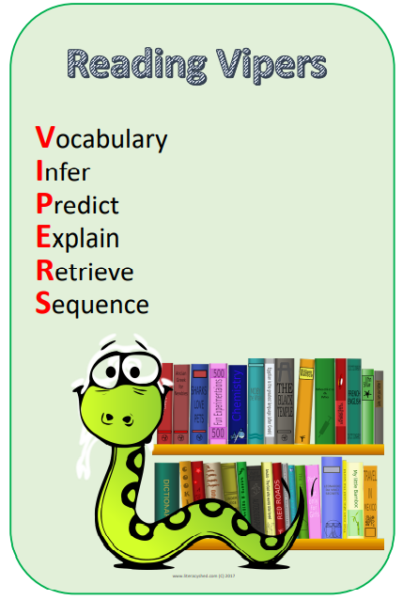English is broken down into three sections:
- Reading
- Speaking and Listening
- Writing
Reading Curriculum Statement
Intent
Reading is a fundamental part of everything we do at Flintham. At FPS we value reading as an essential life skill, and we are dedicated to enabling our pupils to become lifelong readers and develop that love of reading which will never leave them. We believe reading is the key to academic success and so to ensure this we have a holistic approach to the teaching of reading. Children are exposed to high quality texts across the school and reading skills are taught explicitly in all year groups. Alongside the skills of decoding and comprehension, book talk encourages children to think as a reader and discuss their preferences, likes and dislikes.
Implementation
EYFS and KS1
Early reading is prioritised in EYFS and KS1. It is underpinned by the coherent and systematic phonics scheme, Read Write Inc (RWI), which is taught daily. RWI is a phonics complete literacy programme which helps all children learn to read fluently and at speed so they can focus on developing their skills in comprehension, vocabulary and spelling. Impactful phonics sessions are timetabled from the moment our children start at school as Early Years. EYFS and KS1 staff are trained in teaching RWI phonics to ensure all teaching is to the same high standard following the outlined session structure. Each child is individually tracked. Teachers draw upon observations and continuous assessment to ensure children are stretched and challenged and to identify children who may need additional support. All children are also assessed regularly by our RWI lead teacher so they work with children at the same phonic level. This allows complete participation in lessons. Reading books are completely matched to children’s phonic abilities; there is a clearly coded system and tracking for reading/sound knowledge in EYFS and KS1. The use of phonetically decodable books ensures the application and consolidation necessary for effective decoding. Home/school reading books match each stage of phonics learning. A clear progression through the phonic stages and appropriate books supports the process leading to automaticity and fluency.
Assessment of comprehension is also through shared reading in phonics sessions and the reading of books with the children in KS1 and EYFS.
Children in EYFS and KS1 are read to daily. Children who are unable to achieve the phonics expected standard at the end of Year 2 will proceed to reading intervention support in Year 3. Phonics is continued in KS2 for those who need it, including application practice with decodable reading books.
Our class libraries and school library are being further developed and now have a range of non-fiction, fiction, magazines, newspapers and a variety of reading materials. All classroom books are colour coded for progression so children can access books at their reading level.
KS2
KS2 reading is planned through whole class reading to cover all National Curriculum reading objectives i.e. recording and retrieving information, inference with evidence, words in context, enhanced meaning and choice, summarising main ideas, comparisons within text. Reading across subjects is greatly encouraged. Reading for pleasure is a cornerstone of our approach and reading is prioritised and promoted across the school the following ways:
- Teachers reading to their children. We believe it is fundamental that children are read to and every class teacher regularly reads to and discusses books with their pupils.
- Progression of texts chosen across school for reading
- Daily phonics lessons in EYFS and KS1
- Daily Reading Activity in all Classes
- Expectation of reading taking place at home. Parental guides with suggested times sent home and available on website
- Reading badges for those reading regularly at home
- Annual RWI Phonics and Reading Parents Evening
- Promotion of ambitious Tier 2 vocabulary across school
- Literacy Volunteer once a week
- ‘Mystery Reader’ in Foundation Class
- Teachers’ Favourite books –bought for the library and read in assemblies
- Dedicated reading area in every class with a range of high quality texts
Impact
Past KS1 and KS2 SATs papers are used for assessment purposes at the end of the Autumn and Spring Terms for Years 2 and 6. These are undertaken by the whole of the Equals Trusts schools so comparisons can be made. Years 1, 3, 4 & 5 are assessed using NfER tests. These are used to see whether children are on track to be working towards, at or exceeding age related expectations. Assessments are made alongside teacher assessments using their first-hand evidence of how pupils are doing, drawing on whole class reading sessions, reading comprehensions and discussions with pupils. Adjustments to reading/phonics interventions are made as and when teachers feel they are needed.
These judgements are quality assured by the English Subject Lead drawing together evidence from pupil interviews – discussing what they remembered about the content they have studied; observations of whole class reading sessions; work scrutiny and pupil progress meetings.
End of year impact is a measured through end of key stage assessments in EYFS, Year 2 and Year 6 as well as phonics outcomes in Year 1 and Year 2. In Year 3, 4 & 5 assessments are carried out using the Summer Term NFER Reading Tests. These judgements will inform the curriculum and whether children are ready for the next stage of their education.
Learning to read is one of the most important things your child will learn at our school. At Flintham Primary School we believe that reading is a vital life skill and one that is high on our priority list. Being able to read fluently enables access to all other areas of the curriculum.
We want your child to love reading – and to want to read for themselves. In reading we aim to develop not only fluency and comprehension but also to foster a life-long love of words, books and stories.
At FPS school we passionately believe that every child will be a reader and are determined to promote children developing a love of reading at school and at home.
• Reading improves concentration – Children have to sit still and quietly so they can focus on the story when they’re reading. Reading also relaxes the body and calms the mind whilst also exercising the connections in the brain.
What Does Reading Do For Our Children?
- Reading teaches children about the world around them – through reading, they learn about people, places and events outside their own experience.
- Reading improves a child’s vocabulary, leads to more highly-developed language skills and improves the child’s ability to write well.
- Children learn new words as they read as well as seeing how to structure sentences and how to use language effectively.
- Reading develops a child’s imagination – when we read we translate the descriptions of people, places and things into pictures.
- Reading helps children develop empathy – when we’re engaged in a story, we imagine how the characters are feeling and use our own experiences to imagine how we would feel in the same situation.
Reading Resources
We have put some reading resources together and hope you and your children enjoy accessing them and using them to help with your children’s reading development. Please don’t hesitate to ask if there is anything you need further clarification on.
FPS Speaking and Listening Curriculum Statement
Intent
Our FPS Curriculum is designed with the intent to maximise potential of all of our pupils; intellectually, socially, morally, emotionally and culturally. We take every opportunity to inspire a love for learning within all of our pupils, based around a resilience for learning and achieving greatness. Most importantly we allow our children to learn in a safe and stimulating environment, where their views are valued.
Speaking and listening is central to our Curriculum and is developed from EYFS to the end of Year 6 across the whole curriculum. We nurture children’s speaking and listening skills through a variety of approaches: exploratory play, story time, hot-seating, PSHE and through collaborative learning in Science and RE. We develop these skills so that our children are capable of expressing their own ideas clearly and confidently, in a safe and supportive environment, in all aspects and areas of their school life and into their future.
Implementation
All staff in our school model the use of higher level vocabulary within their speech and expanding children’s vocabulary is a key focus from EYFS to Year 6. Subject specific vocabulary is embedded across the curriculum, through teacher modelling, in context. Contextual learning helps children to understand new words and supports them in including them in their work. This model is reflected in shared and class reading sessions where children are given the chance to explore unfamiliar vocabulary and expand their knowledge of words. We have a Tier 2 ambitious vocabulary programme in which children learn, practise and apply new words. We are keen to model the correct grammar in speech, for example using ‘we were’ instead of ‘we was’ and encourage children to reflect this in their use of spoken and written language. Children are regularly given the chance to orally rehearse ideas before writing.
Teachers regularly read to their children. We believe it is fundamental that children are read to and every class teacher reads and discusses the books with their pupils, pausing to discuss an unknown word or particularly well written phrases. Children are encouraged to ‘magpie’ words and phrases from their reading and from each other.
To develop our children’s confidence in public speaking, we participate in Equal’s Trust Story Telling Evening, a wonderful event, where in preparation, our pupils have worked with a story teller to write and practice their own piece of writing, which is then performed to parents from all the schools.
Drama is used across all subjects to explore and engage children in their learning. This gives children the chance to embed vocabulary in shared activities and embed the use of topic specific language repetitively. We have visitors to school, for example in History, a Viking or Roman Centurion and the children are immersed in the experience for the whole day in character. Teachers also arrange whole day experiences in eg Victorian School Day or Super Hero Day. We have an annual Visual Literacy Day, where the whole school, including staff, dress as characters from the film. The film is paused at various points for the children to act out a scene or create and perform their own piece of writing eg. ‘The Snowman’ by Raymond Briggs, the children acted out the different parts of the story in their houses, with older children supporting the younger ones.
As a whole school we have Christmas, Easter and summer productions, this enables all children who wish to, to have a speaking part and builds their confidence and self esteem from an early age.
Our SCARF, PSHE, RE and SRE programmes of study are designed to give pupils the confidence to share their ideas, communicate a different point of view and create discussion. Children are encouraged to ‘build’ on each other’s suggestions, sift through different ideas and communicate their thoughts. Above all, they try to understand each other and alternative points of view.
Collaborative work across the curriculum is also helping to develop our speaking and listening skills. Children are to be given sufficient time to share and discuss their ideas, before recording.
Impact
Speaking and listening give us the basic skills we need to communicate with the world around us. Children are given a range of opportunities to develop these skills, in a safe and stimulating environment. The wide range of speaking and listening activities – which are weaved throughout our curriculum – help to develop ideas, vocabulary and confidence, as the more we talk, the more we pick up on different words that other people use.
FPS Writing Curriculum Statement
Intent
The writing curriculum focuses on the skills outlined in the National Curriculum so that children will leave our school having met the age related expectations and be prepared for secondary school and then the opportunities and challenges of further education and employment. Units of work may appear to be very different – fiction or non-fiction; poetry; novel based or picture or film based – but at the heart of all units will be the age related expectations, which build to end of year and end of key stage targets. We map our writing genre to ensure that all year groups are given the opportunity to write for a range of different purposes.
At the end of the EYFS, children aim to achieve at least a Good Level of Development and be able to demonstrate a growing command of English. They gain the gross and fine motor skills necessary to form letters and use their knowledge of letter-sound correspondence to write at an appropriate phonic stage of development.
Across Key Stages 1 and 2, children become increasingly aware of curriculum targets in their year group and are able to discuss them, using the vocabulary set out in the National Curriculum and those words from our Tier 2 ambitious vocabulary programme. The process of introducing and teaching age related objectives takes place throughout the autumn term, with opportunities to practise and apply these new skills – and core objectives from previous years – taking place in all three terms.
Teachers build on the knowledge and skills of previous years by consolidating this work before, and during, the process of introducing new age related objectives. Sentence writing progression is linked to age related expectations from the National Curriculum – which increases the range and complexity of sentence structures that children are expected to use in their spoken language and writing.
Curriculum objectives focus on the development of children’s ability to communicate effectively both in spoken and written English. Our school particularly focuses on the development of grammatical knowledge – necessary for the advancement of children’s spoken and written language.
The ambition of the curriculum is that all children will achieve at least age related expectations. Where necessary – for some children – the curriculum may be modified, but age related objectives from the National Curriculum would remain at the centre of this. Children who are working significantly below the age related expectations will receive additional support in an attempt to close the gap. This is in recognition of the fact that without skills in English, children will struggle to access other subjects in the curriculum.
Implementation
Writing is taught across all year groups through a range of exciting stimuli which includes books, film clips, artefacts, visitors and real life experiences. We strive to equip children with a rich vocabulary which can help them bring their writing to life. Teachers model the writing process, dissect and annotate good examples, demonstrating the ambitious high standards expected of all children.
The school follows its own detailed progressive phonics programme which is based upon the principles of ‘Read, Write, Inc’. It is taught systematically throughout EYFS and KS1 and children are grouped within EYFS and across KS1 according to their phonic phase. This enables accelerated progress for pupils who are beginning the reading and writing process, whilst enabling the early identification of pupils who are struggling.
Throughout EYFS, emergent mark-making is celebrated and valued as children begin to ascribe meaning to the marks they make, differentiating them from drawings. Children receive a daily dedicated teacher/TA led writing activity. As children demonstrate their ability to write independently using their phonic knowledge, blending and segmenting skills are monitored closely alongside the acquisition of new grapheme-phoneme correspondences. Children are given target cards of next steps which they receive stamps for when these are evidenced in their writing. Writing activities always form part of the continuous provision.
Within KS1 and KS2, National Curriculum requirements for grammar, punctuation ans spelling (GPS) are integrated into the curriculum and children are expected to apply their knowledge of phonics and GPS when writing independently. Discreet GPS sessions are timetabled for KS2. Children are encouraged to use dictionaries, thesaurus, ‘have a try spelling books’, work banks, spell checkers and each other/teacher to check unknown spellings.
Writing expectations are equally high across all areas of the curriculum and are evidenced by the appropriate use of subject specific vocabulary in context. Year group objectives – and objectives from previous years – are taught and used throughout the year. Children are also given opportunities to apply their writing skills across the curriculum. Crucially, children understand that the quality of their writing should be replicated across all subjects – if they are working at age related expectations in their English book, there should be evidence of this in their science or history books too. We employ a ‘5 Point Marking Scheme” to ensure non-negotiables regarding punctuation and spelling are being applied accurately.
When pertinent to the task, and particularly when undertaking a piece of sustained writing for a particular genre, the children are taught the writing process from initial ideas, planning, first drafts, editing and improving (purple pen to polish) to final copies. These pieces of creative writing can be independent, paired, group or class activities.
Approach to Feedback
Wherever possible, school has adopted a ‘live marking’ approach, whereby teachers use assessment for learning to give verbal feedback to children in lessons. Children can then act on this feedback immediately, without having to wait until the next day and act on a piece of written feedback. This feedback will usually be linked to the year group objectives and the discussion involved in this will reinforce the pupil’s understanding and the technical vocabulary relating to the objective. We have a ‘marking code’ which the children are familiar with and this is used in books to indicate if feedback is verbal or non -verbal.
Feedback with final copies of creative writing takes the form of self and teacher assessment using ‘Steps to Success’ Ladders. This is in-depth marking. The children know the objectives and indicate whether they have met them or not and so does the teacher. The children are informed of what they are doing well and given an area to improve and develop. The children revisit the piece of work and where needed, respond to the marking. Every child is encouraged to let their imagination and personality shine through in their writing.
In addition to these small conversations intended to address a particular misunderstanding, teachers will also regularly assess pieces of independent writing. This assessment makes use of the year group checklist – that teachers and children are both aware of – and is an ongoing method of target setting. Throughout the year, children in all year groups are given specific independent writing tasks to complete in their ‘Independent Writing Book’ to demonstrate progress. These books are passed on from year to year. The writing tasks are completed once every half term. A range of different genre is employed and these pieces of independent writing are used as evidence for the end of year writing assessment.
Impact
O’Track is used to record the progress that pupils are making with their independent writing, GPS and phonics progress. This will record whether children are working towards, at or exceeding the age related expectation. Independent writing assessments are made throughout the year and entered termly and mid way through the Spring Term.
Teachers’ writing judgements are moderated by the school, Equals Trust and LA and during pupil progress meetings. The subject leader monitors writing using first hand evidence of how pupils are progressing, drawing together evidence from pupil interviews (are they able to discuss their progress and provide examples across a variety of texts and subjects), lesson observations and work scrutiny.
End of year impact is a measured through end of key stage assessments in EYFS and Year 6 and regarding phonics in Year 1 and Year 2. Years 3, 4 & 5 GPS is assessed using the Summer Term NFER Tests. All writing assessments are teacher assessed across a range of work. These judgements will inform the curriculum and whether children are ready for the next stage of their curriculum.
Read Write Inc
At Flintham Primary School we use the Read Write Inc (RWI) programme to get children off to a flying start with their English. RWI is a method of learning centred around letter sounds and phonics, and we use it to aid children in their reading and writing.
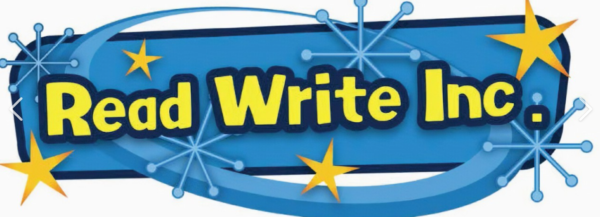
Reading opens the door to learning. A child who reads a lot will become a good reader. A good reader will be able to read more challenging material. A child who reads challenging material is a child who will learn. The more a child learns, the more he or she will want to find out.
What is Read Write Inc?
Read Write Inc (RWI) is a phonics complete English programme which helps all children learn to read fluently and at speed so they can focus on developing their skills in comprehension, vocabulary and spelling. The programme is designed for children aged 4-7. However, at FPS we begin the programme in Early Years and will continue teaching RWI to children beyond the age of 7 if they still need support in their reading. RWI was developed by Ruth Miskin and more information on this can be found at Parents and Carers – Ruth Miskin Literacy.
How will RWI be taught?
All children are assessed regularly by our RWI lead teacher and grouped according to their ability. This allows complete participation in lessons and ensures children are successful with their reading, therefore developing confident and resilient readers.
Early Years: When appropriate, children will be introduced to the initial sounds in short five minutes sessions.
Reception: In Reception all children will learn how to ‘read’ the sounds in words and how those sounds can be written down.
Using RWI, the children learn to read effortlessly so that they can put all their energy into comprehending what they read. It also allows them to spell effortlessly so that they can put all their energy into composing what they write.
When using RWI to read the children will:
– learn that sounds are represented by written letters
– learn 44 sounds and the corresponding letter/letter groups using simple picture prompts
– learn how to blend sounds
– learn to read words using Fred Talk
– read lively stories featuring words they have learned to sound out
– show that they comprehend the stories by answering questions
When using RWI to write the children will:
– learn to write the letters/letter groups which represent 44 sounds
– learn to write words by saying the sounds in Fred Talk
– write simple sentences
Talking
The children work in pairs so that they:
– answer every question
– practise every activity with their partner
– take turns in talking and reading to each other
– develop ambitious vocabulary
Year One & Year Two
Children follow the same format as Reception but will work on complex sounds and read books appropriate to their reading level. Daily sessions of RWI phonics last for half an hour. Once children become fluent speedy readers they will move on to literacy in Year Two.
Children will be taught how to read as follows…
Fred Talk
We use pure sounds (‘m’ not’ muh’,’s’ not ‘suh’, etc.) so that your child will be able to blend the sounds into words more easily. At school we use a puppet called Fred who is an expert on sounding out words! We call it, ‘Fred Talk’. E.g. m-o-p, c-a-t, m-a-n, sh-o-p, b-l-a-ck.
The children are taught the sounds in 3 sets.
Set 1 Sounds are taught in the following order together with rhymes to help children form the letters correctly and instantly recognise sounds ready for blending.
Please do not use letter names at this early stage. Children will also use pictures for each sound to help recognise the sound and then form the shape of the sound (see image below)
After the children learn to read some of the early set 1 sounds, we start to work on orally blending two or three sounds together E.g. c-a-t – cat. We play lots of games during this time to encourage the children to blend words together. We might say to them ‘Go and get your c-oa-t’ or ‘Now it is time for l-u-n-ch.’
The children will come home with individual sound cards to practise and then when they are ready, a word time sheet to practise simple words. Once they are confident with most of set 1 sounds, we then introduce the children to ‘ditty’s.’ Ditty’s are short simple phrases and sentences linked directly to the sounds that the children have been taught in Set 1. Once the children are confidently reading these, we then move them onto red books. They will come home with a red book that they have practised in school and also a red book bag book.
The children are then taught Set 2 Sounds – the long vowels. When they are very confident with all of set 1 and 2 they are then taught Set 3 Sounds. The children progress from red books to green and then to pink and so on, until they reach the final colour which is grey. Your child will come home with books that are linked to sounds we have taught them. Within all the books, children will have red and green words to learn to help them to become speedy readers. Red words are words that are not easily decodable; they have a tricky part to them which doesn’t follow the sounds that they have been taught. We teach the children to recognise the tricky part of the red words. Green words are linked to the sounds they have been learning and are easily decodable.
Nonsense words (Alien words)
As well as learning to read and blend real words children will have plenty of opportunities to apply their sound recognition skills on reading ‘Nonsense words’. These words will also feature heavily in the Year One Phonics Screening check in the summer term. Click here for further information on the Screening check. (opens in a new tab).
During the RWI weekly timetable, children will read their RWI book three times and at each new reading they will have plenty of opportunities to practise using their developing comprehension skills, build a bank of new and interesting vocabulary as well as trying to improve fluency.
Spelling Activities
Children will spell words linked to the target sound they are learning every day (This will only start in Reception when children are ready to write and form their letters). Children will use first use ‘Fred fingers’ to first sound out a word before they write it down. Children pinch each sound on their fingers before writing the word. Sound mats are also used to support spelling.
Keep up, Not catch up
If assessments identify a pupil who is falling behind the programmes pace, targeted support is given immediately. Same day one-to-one or small group tuition takes place with a trained TA. The RWI leader frequently discusses individual children with teachers. This allows teachers to ‘flag up’ any child they are concerned about.
What happens when a child has completed the RWI Program?
Once the children have completed the RWI program, they then move onto the RWI comprehension program. This is taught for half an hour a day, with one text being covered over a two-week period.
The RWI Comprehension programme:
- Uses the key teaching strategies in Read Write Inc. Phonics to maintain momentum and pupil progress
- Develops children’s reading fluency and comprehension of fiction and non-fiction texts
- Improves children’s writing by developing their vocabulary, grammar and spelling
The children move onto book banded books and are assessed for fluency and comprehension to check with book band level they will be on.
On top of the daily RWI phonics and comprehension sessions, Year 1 and Year 2 have a weekly whole class guided reading session, focusing on comprehension and fluency. We use the reading VIPERS to support these lessons – Vocabulary, Inference, Prediction, Explanations, Retrieval and Sequencing and key questions linked to each area to further develop a well-rounded reader. See below for further documentation about VIPERS.
Our Read Write Inc Lead Teacher in school is Mrs.Sharphouse. If you have any queries or would like to discuss our phonics programme further, please do not hesitate to contact her.


